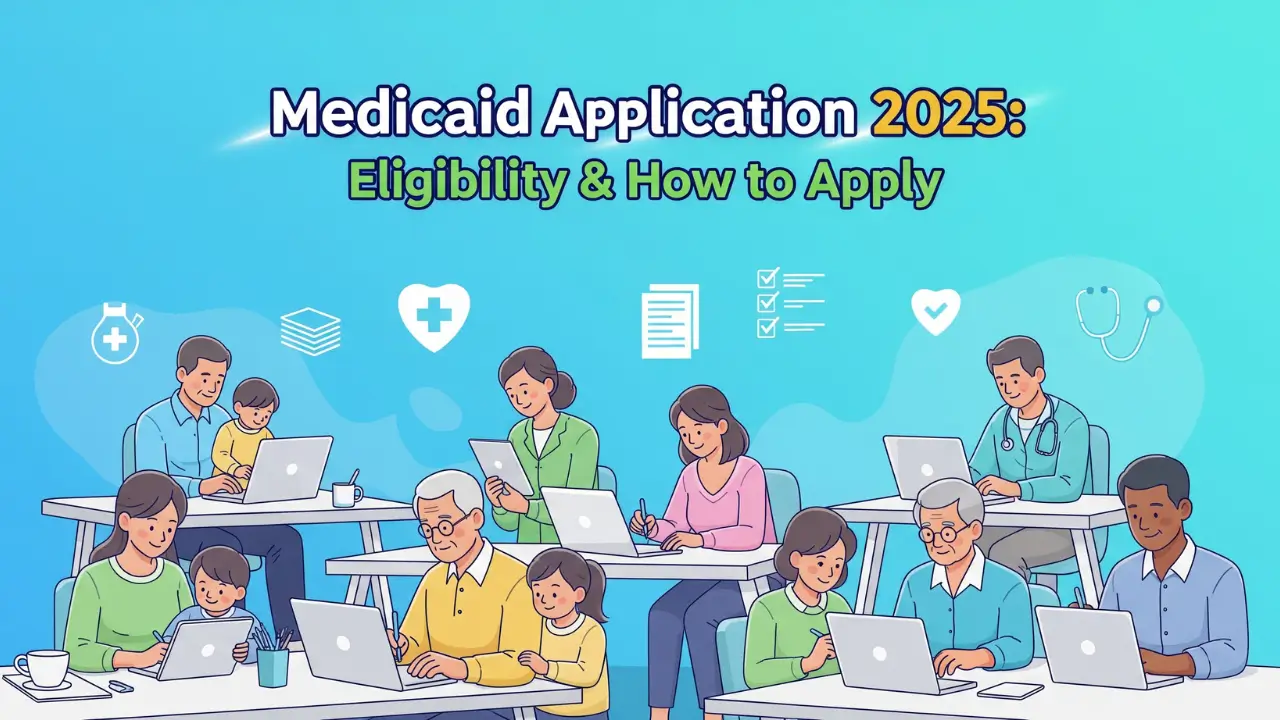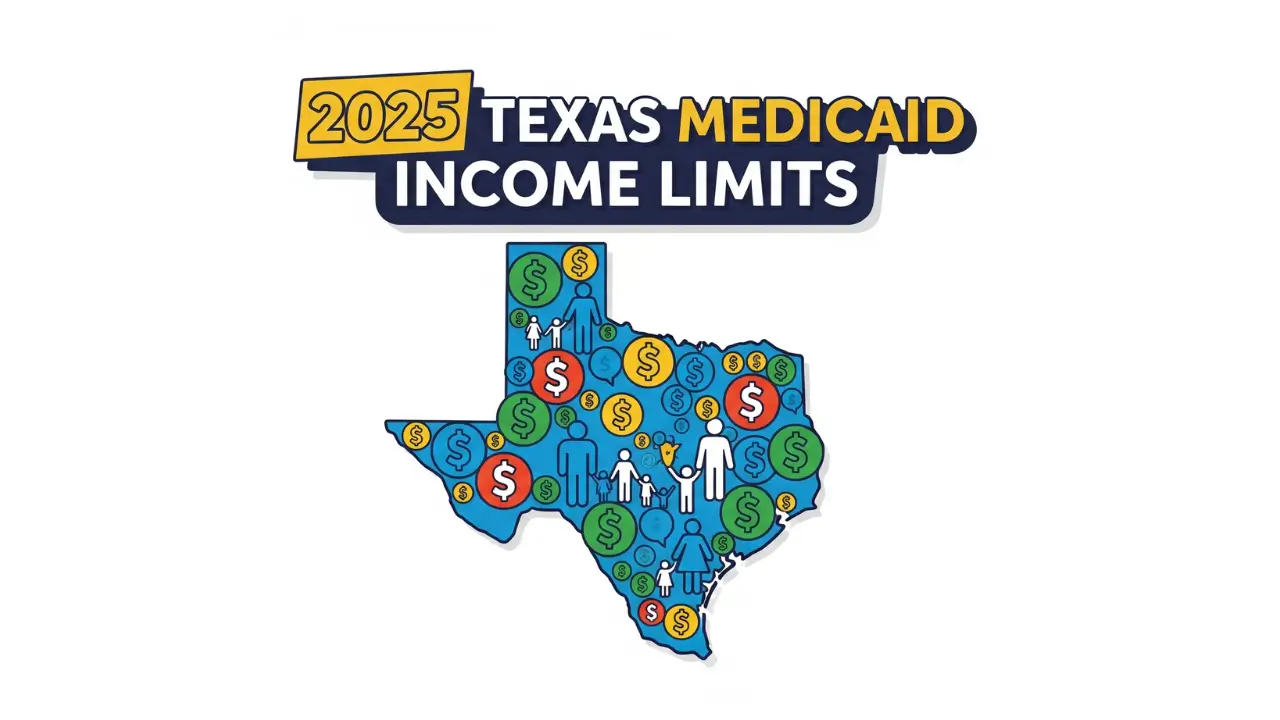Alabama Medicaid offers free or low-cost health coverage to eligible residents, with eligibility determined by income, family size, and specific circumstances.
In 2025, a single adult would not qualify unless pregnant or disabled, while a family of four could still get coverage for children if the income is below $44,367.
Alabama is one of the states that has not expanded Medicaid, and with the “One Big Beautiful Bill” now shaping new work requirements and stricter SNAP rules, understanding the income cutoffs is more important than ever.
Key takeaways
- Single adult: No Medicaid coverage unless pregnant, elderly, or disabled.
- Family of four: Children may qualify if income is below $44,367/year.
- Pregnant women: Eligible up to about 146% of FPL.
- Children: Covered up to higher levels, often 200% FPL through Medicaid or CHIP (ALL Kids).
- Trend to watch: The “One Big Beautiful Bill” may bring added restrictions, leaving non-expansion states like Alabama with even fewer adult coverage options.
What is Alabama Medicaid?
Medicaid is a joint program run by the federal government and the state of Alabama. It was established in 1965 to ensure that low-income families, children, seniors, and people with disabilities could access medical care.
Unlike Medicare, which is mainly for people aged 65 and older, Medicaid is based on financial need. In Alabama, Medicaid covers a range of services, including doctor visits, hospital stays, prescriptions, maternity care, and preventive screenings.
For seniors and individuals with disabilities, it also includes nursing home services and long-term care. What makes Alabama different from expansion states is that adults without children generally cannot qualify, no matter how little they make.
The program instead focuses more heavily on children, pregnant women, and people with significant health or financial needs. This focus has made Medicaid a lifeline for many Alabama families.
According to recent figures, hundreds of thousands of children in the state are covered by Medicaid or the related ALL Kids program, Alabama’s version of CHIP.
Understanding the income limits is the first step to knowing whether your family can benefit from this essential safety net.
Alabama Medicaid Income Limits 2025 by Household Size
| Household Size | 100% FPL (Annual) | 138% FPL (Expansion Standard – Not Used in AL) | Alabama Medicaid Notes |
| 1 person | $15,650 | $21,597 | Adults without kids are not eligible |
| 2 person | $21,150 | $29,187 | Parents must earn far less than this |
| 3 person | $26,650 | $36,777 | Children qualify at a higher % FPL |
| 4 person | $32,150 | $44,367 | Pregnant women covered up to ~146% FPL |
| 5 person | $37,650 | $51,957 | Higher limits apply for children and pregnancy |
| 6 person | $43,150 | $59,547 | Eligibility rises with family size |
The table shows how the federal poverty levels increase with each household size. Alabama uses these figures to set its Medicaid rules, but because the state has not expanded, the 138% column is not applied to most adults. Instead, Alabama prioritizes coverage for children, pregnant women, and very low-income parents.
What this means in real life:
- A single parent with two children (3-person household) could make around $26,000 and still get help for their children through Medicaid or CHIP.
- A pregnant woman in a 4-person household could qualify even with income slightly above the 100% FPL mark, because Alabama uses higher limits for pregnancy.
- A childless adult with the same income would not qualify in Alabama, even though they would in most expansion states.
Why Income Limits Vary by Group in Alabama
Not every group of people is treated the same under Alabama Medicaid. Eligibility depends on both income and life circumstances:
- Children: Covered at much higher income levels, often up to 200% FPL through Medicaid or CHIP. This ensures children can still get preventive care, immunizations, and doctor visits.
- Pregnant women: Eligible up to about 146% FPL. Alabama aims to reduce infant and maternal health risks by covering prenatal and delivery care.
- Parents with dependent children: Qualify only at extremely low incomes, often below half of the FPL. This leaves many working parents unable to get coverage.
- Adults without children: Not eligible under Alabama Medicaid, no matter their income. The only exception is if they are elderly, blind, or disabled.
Example: A family of four earning $44,000 would qualify for Medicaid in an expansion state. In Alabama, the children might qualify under CHIP, but the parents almost certainly would not. This shows why knowing your group category is just as important as knowing your income.
How Income Limits Are Decided in Alabama
Medicaid eligibility is built around the Federal Poverty Level (FPL), which is updated each year by the U.S. Department of Health & Human Services. The FPL represents the minimum amount of income a household needs for basic living costs like food, clothing, and shelter. Think of it as a financial yardstick.
Each state then uses those FPL figures to set its own Medicaid rules. In expansion states, adults can qualify if they earn up to 138% of the FPL. Alabama, however, did not expand Medicaid, which means the rules here are stricter. Adults without children cannot qualify at all, and even parents are only eligible if their income is well below the poverty line. Pregnant women and children, however, are given higher limits to ensure they can access care.
For example, in 2025, the poverty guideline for a single adult is $15,650 per year. In an expansion state, that person could qualify for Medicaid up to $21,597 per year (138% FPL). In Alabama, though, that same adult would not be eligible unless they were pregnant or disabled. This shows how much the state’s decision not to expand affects real families.
How to Check If You’re Eligible in Alabama
If you want to know whether you qualify for Medicaid in Alabama in 2025, follow these steps:
- Visit the Alabama Medicaid Agency website or start at Medicaid.gov.
- Use the eligibility tools provided to enter your household size and income.
- Gather documents:
- Pay stubs or tax returns (to show income)
- ID and Social Security number
- Proof of Alabama residency (like a lease or utility bill)
- Proof of pregnancy or disability (if relevant)
- Pay stubs or tax returns (to show income)
- Submit your application: Online, by mail, or at a local Medicaid office.
- Report any changes in income or household size, since they can affect your eligibility.
Tip: Some states automatically check income through tax records to simplify renewals. In Alabama, you may need to provide updated paperwork each year.
What If You Don’t Qualify? Alternatives to Consider
Not everyone meets Alabama’s Medicaid rules, but there are other ways to get coverage:
- CHIP (ALL Kids program): Provides affordable health insurance for children whose families earn too much for Medicaid but still cannot afford private insurance. It covers doctor visits, hospital care, dental, vision, and prescriptions.
- ACA Marketplace: When you apply through HealthCare.gov, the system will check your Medicaid eligibility first. If you don’t qualify, it calculates subsidies to lower your premium costs. Many families in Alabama pay less than $50 a month, and some plans can be as low as $20.
- Community Health Centers: For people in the “coverage gap,” federally funded health centers offer care on a sliding scale. Services may include primary care, women’s health, and chronic condition management.
These options ensure that even if Medicaid isn’t available to you, there are still safety nets to keep healthcare within reach.
FAQs
Q1: What is the maximum income for a child to qualify for Medicaid in Alabama in 2025?
Children can qualify at much higher levels than adults, sometimes up to 200% FPL, depending on the program.
Q2: Does Alabama cover adults without children under Medicaid?
No. Adults without dependent children are not eligible, unless they are elderly, blind, or disabled.
Q3: What about pregnant women in Alabama?
Pregnant women qualify up to around 146% of FPL, giving them access to prenatal and delivery care.
Q4: How often are Medicaid income limits updated?
Every January, when HHS releases new federal poverty guidelines.
Q5: What is the ALL Kids program?
It’s Alabama’s CHIP program, covering children above Medicaid income limits with low premiums and copays.
Q6: Where can I apply for Alabama Medicaid?
You can apply through the Alabama Medicaid Agency website, Medicaid.gov, or by submitting a paper application at a local office.
Conclusion
Alabama Medicaid income limits for 2025 are strict compared to many other states. Because Alabama did not expand Medicaid, many adults without children cannot qualify, and parents often need to earn well below the poverty line. However, children, pregnant women, seniors, and people with disabilities have broader eligibility.
If you believe you may qualify, don’t wait to apply. Visit the Alabama Medicaid Agency website, gather your documents, and submit your application. Even if you are not eligible, programs like ALL Kids, ACA marketplace subsidies, and community clinics can still help you and your family access affordable care.
Healthcare can feel complicated, but with the right information, you can take the next step confidently.




